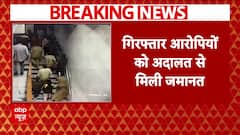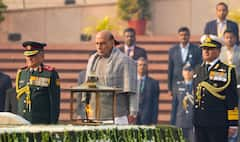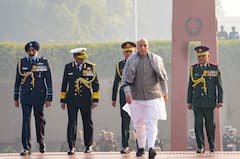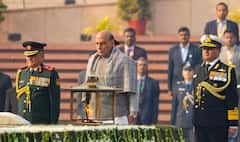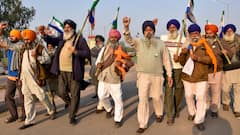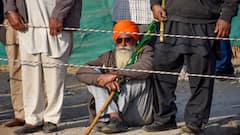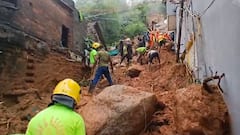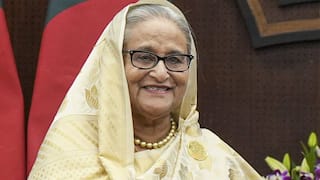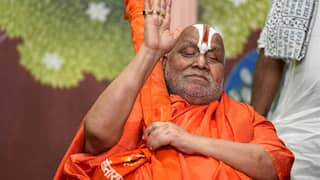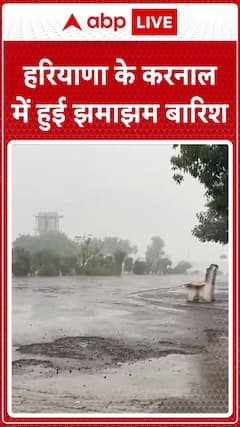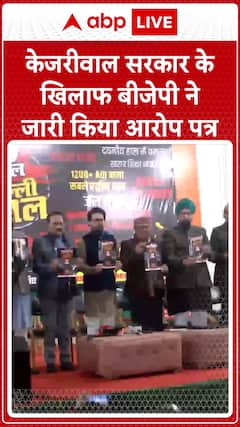Explorer
Advertisement
Kargil Vijay Diwas 21st Anniversary: 10 Facts About Indo-Pak Military Conflict In 1999
Kargil Vijay Diwas, named after the successful Operation Vijay, is celebrated in India on 26 July. On this date in 1999 India successfully took command of the high outposts which had been lost to Pakistan.

India is observing the 21st Anniversary of Kargil Vijay Diwas on Sunday (July 26) to pay tributes to the brave martyrs who laid down their lives to uphold and safeguard the sovereignty and integrity of the nation during the 1999 Kargil War.
Every year on July 26, the nation commemorates the success of 'Operation Vijay', which was launched by the Indian Army to recapture the glacial heights and strategic vantage points in the Kargil-Dras sector of Ladakh region from the Pakistani Army backed intruders. In honour of the glory and saga of the Bravehearts of the Indian Army who fell in the line of duty during the Kargil War, July 26 is also hailed as 'Kargil Vijay Diwas'.
On the 21st Anniversary of the Kargil Vijay Diwas, here are 10 key facts about the 1999 Kargil War
The 1999 Kargil War was fought by the Indian Army to recapture and reclaim the strategically located heights and features well inside Indian territory in the Kargil and Dras sector of the Ladakh region, which were infiltrated by the Pakistan Army backed militants in the spring of 1999.Duration of the War
The 1999 Kargil War was fought for over two months (First Week of May to Last Week of July ) between the Indian Armed forces and the Pakistani Army backed militia in the Kargil-Dras sector of Ladakh region.The battleground of the Indo-Pak Kargil Military Conflict
The 1999 Kargil War was fought in a highly mountainous and barren terrain amid the topsy- turvy ridgelines of the Kargil and Drass sector. The Indian Army launched frontal assaults in sub-zero temperatures generally at night on the lofty peaks in the Batalik, Jubar, Mushkow, Tololing, Khalubhar, and Turtuk sectors of Kargil and Dras regions to clear out Pakistan army-backed infiltrators.
Indian Army Launches Operation Vijay To Recapture Strategically Located Territories
With the first set of reports on May 3-4 over infiltration in certain strategically located features / by Pakistani Army-backed militants well inside Indian territory in the Kargil-Dras sector, the Indian Army launched a massive offensive operation code-named 'Operation Vijay' on June 6 with the purpose of pushing back the adversary from the peaks and glacial heights.
On July 14, the then Indian PM Atal Bihari Vajpayee declared Operation Vijay a success. On July 26, the Kargil conflict finally came to an end with the Indian Army announcing the complete eviction of Pakistani intruders.
Direct Military Conflict Between India and Pakistan Since 1971 War
The 1999 Kargil War was for the very first time in nearly three decades that India and Pakistan had got into an active military confrontation since the 1971 Indo-Pak War. It was also for the first time that two nuclear powered nations were engaged in a military conflict which triggered off a limited scale war in a specific theater in the Ladakh region.
Bofors Guns Proved To Be Game-Changing Weapon During Kargil War
The Kargil War saw the highly controversial but much famed Bofors Guns of the Indian Army's Artillery units being used to great effect in shelling and bombarding deep trenched enemy locations and also providing cover fire to infantry troops in carrying out daredevil assaults to eliminate the intruders and reclaim the lofty peaks occupied by the enemy.Operation Safed Sagar - Precision based Aerial Strikes On Enemy Hideouts
The Indian Air Force (IAF) carried out an Operation coded Safed Sagar to complement and augment the Indian Army's pursuit in recapturing the icy heights in the Kargil-Dras sector. The MiG 21 and Mirage fighters undertook routine sorties to unleash precision-based aerial attacks with laser-guided bombs and missiles to seek and destroy well-fortified Pakistani Army supply lines and hideouts.
Indian Navy Launched Operation Talwar
Amidst all the focus on the land assaults and air-based strikes carried out by the Indian Army and the Air Force (IAF), the Indian Navy played a strategic role during the Kargil War by launching Operation Talwar to blockade Pakistani ports, especially the key port in Karachi.
The purpose of the Naval operation in the high seas was to stop the supply of oil and fuel and economically cripple Pakistan. The western and eastern fleets of the Navy patrolled the Arabian Sea and threatened to cut Pakistan’s trade routes.
Param Vir Chakra
Captain Manoj Kumar Pandey, 1/11 Gorkha Rifles (Posthumous), Captain Vikram Batra ((Posthumous) and Rifleman Sanjay Kumar (13 Battalion of Jammu and Kashmir Rifles), Grenadier Yogender Singh Yadav (18 Grenadiers) were conferred with the Param Vir Chakra (PVC), the nation's highest gallantry award for displaying most conspicuous bravery and unparalleled act of valour during the Kargil War.
Casualties
As per reports, India's victory in the Kargil War came at a high price with over 500 (515-530 approximately) Indian Armed forces personnel attaining martyrdom during the military confrontation to regain control of previously held territories and re-establish status quo
Follow Breaking News on ABP Live for more latest stories and trending topics. Watch breaking news and top headlines online on ABP News LIVE TV
View More
Advertisement
Trending News
Advertisement
Advertisement
Top Headlines
World
Education
Cities
India
Advertisement












